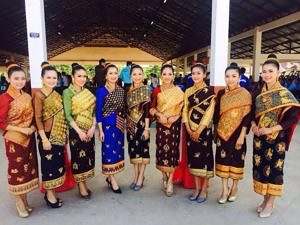Colorful Celebrations – the Festivals of the Philippines
The Philippines, an archipelago of over 7,000 islands, is home to a tapestry of cultures and traditions that give rise to some of the most vibrant and colorful festivals in the world. Known locally as “fiestas,” these festivals in the Philippines are a testament to the country’s rich history, religious fervor, and the undying spirit of its people. From the northern highlands to the southern shores, every region has its unique way of celebrating, each festival bursting with life, color, and excitement. Let’s embark on a journey through some of the most traditional Filipino festivals, exploring their origins, how they’re celebrated, and what makes them an integral part of the Filipino cultural identity.
Sinulog Festival – Cebu City
Held on the third Sunday of January, the Sinulog Festival is one of the most well-known festivals in the Philippines. It is a religious celebration in honor of the Santo Niño (Holy Child Jesus). The festival features a grand parade with participants dressed in bright, elaborate costumes, dancing to the rhythm of drums, trumpets, and native gongs. The streets of Cebu City come alive with colors, as both locals and tourists gather to witness the spectacle and join in the merrymaking. The Sinulog dance movement, a forward and backward step pattern, symbolizes the current (sulog) of Cebu’s Pahina River, mirroring the people’s acceptance and embrace of Christianity.
Ati-Atihan Festival – Kalibo, Aklan
The Ati-Atihan Festival, held every third week of January in Kalibo, Aklan, is often dubbed as the “Mother of All Philippine Festivals.” It celebrates the Santo Niño and pays homage to the indigenous Ati people, the original settlers of Panay Island. Participants paint their faces and bodies in black to resemble the Atis and don flamboyant costumes as they dance through the streets to the infectious beat of drums. The festival is a wild, cheerful celebration of dance, music, and indigenous culture, culminating in a religious procession.
Panagbenga Festival – Baguio City
Celebrated in February, the Panagbenga Festival, also known as the Baguio Flower Festival, marks the season of blooming. This month-long celebration in the “Summer Capital of the Philippines” showcases magnificent floats covered in flowers, street dancing parades with participants in flower-inspired costumes, and a variety of competitions and exhibitions. The festival not only highlights the city’s vibrant flowers and cool climate but also its resilience and recovery after the devastating earthquake in 1990.
Pahiyas Festival – Lucban, Quezon
Every 15th of May, the Pahiyas Festival transforms the town of Lucban, Quezon, into a dazzling display of colors. The festival honors San Isidro Labrador, the patron saint of farmers, celebrating a bountiful harvest. Houses are adorned with fruits, vegetables, and colorful rice wafers called “kiping,” creating a stunning visual feast. The creativity and ingenuity of the locals are on full display, making Pahiyas one of the most photogenic festivals in the Philippines.
Kadayawan Festival – Davao City
The Kadayawan Festival is Davao City’s annual thanksgiving celebration, held every third week of August. It celebrates the bountiful harvests of fruits and orchids during the season. The festival is a showcase of the city’s rich culture, with street dances, floral floats, and beauty pageants. Indigenous tribes and local communities come together to perform traditional dances and exhibit their crafts, providing a glimpse into the diverse cultures that thrive in harmony in Davao.

MassKara Festival – Bacolod City
The MassKara Festival, held every fourth Sunday of October in Bacolod City, is known for its dazzling array of smiling masks – a symbol of the city’s moniker as the “City of Smiles.” The festival was conceived in the 1980s as a way to uplift the spirits of the locals during a time of crisis. Today, it features street dances, beauty pageants, food festivals, and sports events, all culminating in a grand masquerade ball. The smiling masks worn by participants represent resilience and the ability to smile through adversity.
Dinagyang Festival – Iloilo City
The Dinagyang Festival, celebrated every fourth Sunday of January in Iloilo City, is another spectacular tribute to the Santo Niño and the rich culture of the Ilonggos. It features a religious procession, a fluvial parade, and a competition where tribes perform dramatic dances depicting the history and culture of the region. The performers, adorned in elaborate costumes and headdresses, dance to the beat of drums, creating an energetic and captivating spectacle.
FAQs – the festivals in the Philippines
How do the festivals in the Philippines impact the local economy and tourism?
Festivals in the Philippines significantly boost the local economy and tourism by attracting visitors from around the globe. These events provide opportunities for local businesses, including hotels, restaurants, and artisans, to thrive as they cater to the influx of tourists. Additionally, festivals highlight regional specialties and crafts, further stimulating economic activity.
Are there any specific rituals or practices unique to certain festivals that have historical or cultural significance not covered in the article?
Many Philippine festivals have unique rituals or practices deeply rooted in history and culture, such as the Ati-Atihan’s tribal dances or Sinulog’s religious processions. These elements often pay homage to indigenous traditions or historical events, enriching the festival’s cultural significance.
How do locals and tourists participate in these festivals, and are there any guidelines or etiquette they should follow?
Participation in these festivals involves a blend of spectating and active involvement, with guidelines typically revolving around respect for local customs and traditions. Tourists are encouraged to engage respectfully, often by wearing traditional attire, joining parades, or partaking in local activities. Awareness of and adherence to etiquette, such as proper behavior during religious ceremonies, is crucial for all attendees.







